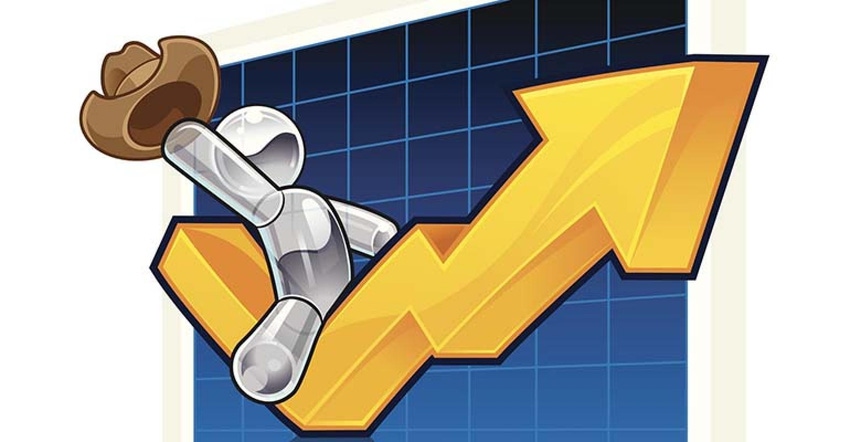March 17, 2023

It is fascinating to me how things happen in spurts. It is even more fascinating to me that when you think of something or someone it shows up.
Early in the week my daughter and I finished up our latest trade and it was an outstanding one. While in the seats the last few weeks I have seen the market providing some wonderful opportunities and I wondered if anyone else was taking advantage of them.
Later in the week I received many calls and texts from past participants of my marketing schools. That answered two questions I had in my mind. Is anyone else taking advantage of the opportunities? And how are these people doing?
I heard success stories of fat to feeder trades, feeder to feeder trades, and cow trades. Some of these trades they had done were impressive. Currently I have identified 19 ways to add monetary value to some animals, and some of these people were doing just that.
Marketing literacy is a sure way to be able to prosper oneself. One of the reasons sell/buy marketing works so well is because our control is on the buy. If a person has even the slightest desire to make a profit that may be all it takes to have enough discipline to know when to stop bidding on an animal.
19 Ways
When I get into the 19 ways to add monetary gain to some animals, some of these require stockmanship skill and possibly some veterinary skill, so they are not for everyone. Before you try your hand at any of these you must be honest with yourself about your ability to handle them .You must be confident in your abilities. These animals can, and sometimes will try to humble you.
One thing I get asked about often is where do I find all the feeder bulls that I quote as a discount at the end of this column every week. There are culture differences across the country, and in some places if you show up with feeder bulls it means you are a lousy rancher, so people in those areas probably won’t get the chance to bid on many of them.
In other areas we are seeing more and more of these feeder bulls every year. It may be because the producer is getting old, has a fulltime job off the farm, or lacks the facilities and/or skill to castrate.
A great entrepreneur will take someone else’s problem and make it their problem. They then will come up with a solution to that problem and that is how they bring value to the marketplace.
Sticking with the feeder bulls and bawling calves as our example. Most operations do not want bulls on their place to finish because they do not want bull behaviors, and they prefer the efficiency of steers. They also do not want bawling calves around for a variety of reasons, most of which revolve around health and handling. For most people these cattle are a problem, and that is why they are discounted.
A great entrepreneur with market literacy and the skill to handle these, takes these problem cattle that the market doesn’t have much desire for, and runs a full program on them. This person will wean them, vaccinate them, and address any cosmetic issues (castrate) they have. That person can then resell them at market value, which is where the monetary gain is captured. This is why I like “problem” or “high risk” cattle, there is money in them, but only if you can handle them.
This is the original value-added program. Value added is only value added if you capture the added value.
Not all the messages I received this week were about feeder calves. I received some cow stories too. These like the feeder bulls are more geographically related. Some of the great buys right now are the “late” calving cows and the thin cows. A late calving cow is one that will not replicate herself before the sprayer and planter starts running. These farmer types are more than willing to sell her off at a discount.
When people sell a cow it usually means they will have to replace it with something. Some will retain heifers to breed. Others don’t like that idea because it takes so long before the heifer produces anything. This is where our problem-solving cowboy/cowgirl entrepreneur comes in. They sell their over-valued female and buy back the under-valued one.
Most of the testimonials I received were people who bought bred cows in December, when no one wanted them, and they sold them as pairs. They bought back these late calvers, and thin cows. This is where we need to understand Intrinsic Value (IV) and be able to compare IV of different animals and their Actual Values. These people sold $225 of value into the market and they got paid $600 or more for it.
Gaining value
Think about that for a moment. In four months, the cow they originally bought gave them a $600 value capture. When was the last time a conventional cow-calf operation sold a calf off the cow for $600 more than it cost to raise it?Not only that these operations now have a replacement female that will appreciate in value by either gaining weight or replicating herself.
These people like calving cows. The work ethic was already there. All my school did for them was give them a means of boiling these females down to their core intrinsic value and give them a means to compare. I raised their level of awareness, and they are prospering because of it.
I can’t over state how important it is for people to make a profit in the cattle business .If we do not make a profit we will quit, go out of business. There may be some kind of disastrous government intervention, or it will lead to more vertical integration.
Without profit we can’t leave a legacy. Without profit the next generation won’t have any interest in the cattle business.
Those last two paragraphs are why I teach sell/buy cattle marketing schools .I am extremely grateful for those who reached out to me this week and shared their success stories. This is how we keep this industry alive, individual people making money .The opportunities are there, and that brings me back to the question I lead with, what are people doing about it?
Cattle Market View
This week the Value of Gain (VOG) varied from one sale to the next on cattle weighing between 450 pounds and 900 pounds. Under the 450 pounds the VOG was high. Once the cattle got to weighing over 900 pounds, the VOG dropped off.
Here’s what made the fat to feeder trade I mentioned earlier a good one. The price cliff on heavy feeders was so sharp that some 10 weights had a price that was lower than fat price. When the buy price is lower than sell price good things are going to happen. The problem is the stocker operation that made these feeders this heavy devalued their feed by feeding the extra pounds on and in turn subsidized they buyer. The feed yard was looking for a different weight of animal to buy but quickly noticed this opportunity open up and so he bought them. This is another reason sell/buy marketing works so well, it is a real time cash flow reckoning.
Here we are again, another week of the cow/calf, stocker and fat segments all making money at the same time.
Feeder bulls were up to 40 back, unweaned calves were up to 20 back, replacement quality heifers caught a $4 premium.
The opinions of Doug Ferguson are not necessarily those of beefmagazine.com or Farm Progress.
About the Author(s)
You May Also Like






